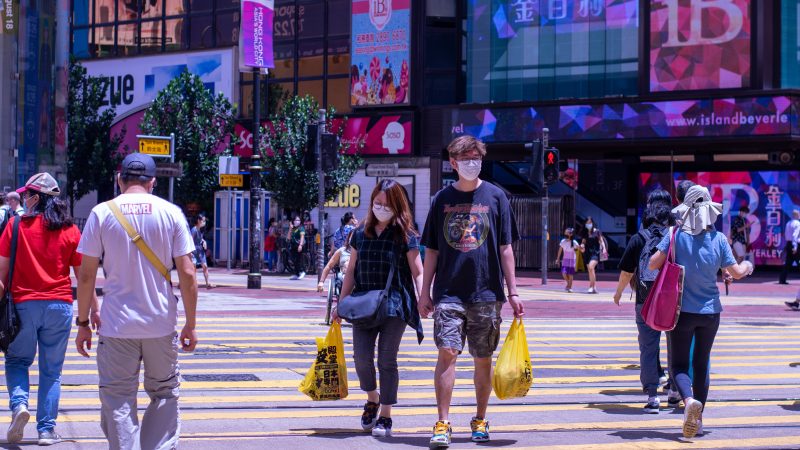
Hong Kong’s sound macro fundamentals are well known. The economy is very well run. Businesses pride themselves on delivering high-quality goods and services. The workforce is efficient, driven, and of high quality. Rules are clear and applied consistently. Hong Kong is a premier business hub and financial center. Its stability is underpinned by strong governance and ample fiscal- and foreign reserves. The coherent policymaking framework enables policymakers to play a facilitative role in normal times, and a strong countercyclical role in extraordinary times – such as during the 2019 domestic unrest and 2020 pandemic.
Indeed these couple of years have been extraordinarily tough for Hong Kong – its economy, businesses, and most of all, its people. After years of robust growth and fiscal surpluses, Hong Kong has confronted back-to-back recessions, an increasing number of businesses facing difficulties and even closure, and sharply rising unemployment in 2019 and 2020. All against the backdrop of a global growth slowdown, trade conflicts, a pandemic, and also, regrettably, the surfacing of domestic socio-political tensions.
Despite all these difficulties, few would bet against Hong Kong bouncing back stronger than ever. To recover well from the crisis, Hong Kong can further enhance the playbook which has served it well for decades. Wrapping policy measures around the three anchors of livelihoods, jobs, and enterprises is right. Thinking hard about the details and the execution is sensible.
The first priority is to kick-start growth, to get the economy back onto a path of steady growth. Hong Kong’s trend growth has been around 2.8-3.0 percent, relatively brisk for an advanced economy. This has made buoyant job creation possible. But since the start of the year, more than 250,000 jobs have been lost. Kick-starting growth would create jobs once again and raise incomes. When employment conditions improve significantly, that would spur domestic investment and attract foreign investment. Growth would also help the financial sector to thrive. And it would generate fiscal resources, which are important for the government to implement policies to strengthen growth and stability.
The second thing is to use fiscal resources judiciously. Hong Kong has wisely built up sizeable fiscal reserves over the years. These stood at about 40 percent of GDP before the crisis. The authorities are right to have used a big chunk this year to mitigate the impact of the pandemic shock on the economy. By the authorities’ calculations, fiscal support has amounted to nearly 11 percent of GDP. Mindful of the need to conserve buffers, policy measures are becoming more targeted, with endpoints in sight. The authorities are also working on a framework to assess which sectors and enterprises will be viable in the “next normal” and which ones will not. The assessment will form the basis to set and calibrate policy measures for the next few years. This approach reflects a mind-set of prudence – that fiscal reserves should be used carefully; and determination – that Hong Kong’s people and enterprises can make adjustments to emerge stronger for the long term.
The third thing is to share the benefits of growth and savings. Hong Kong’s already-wide income disparity may become even more pronounced in the next few years, as the crisis hurts lower-skilled workers more than highly-skilled ones. Living conditions remain far from ideal for low-income families. The socioeconomic mobility of those below the poverty lines is also an issue which the authorities have recognized as needing to be addressed. Many of the job creation programs put in place in recent months aim not just to find jobs for displaced workers but also to improve their long-term employability. Building more than 400,000 housing units to meet the population’s needs over the next thirty years or so remains a top priority. And policymakers are combining big long-term projects such as the Lantau Tomorrow Vision program, with creative interim solutions such as basic container-type housing units which, while modest, are needed and appreciated by families living in challenging conditions.
Comprehensive strategies that run across all three policy priorities will be critical for success.
In reallocating resources to revitalize the economy, it is crucial to determine which sectors and businesses are likely to thrive in the future, how best to shift workers from dying trades to new economy activities, and what the right balance is between smaller-scale quick fixes and longer-term big projects. Also how much fiscal resources should be used to facilitate these adjustments, and how much of the weight should be carried by the private sector.
Externally, Hong Kong has upped its efforts to seek new export markets and sought to use its free trade agreement with ASEAN to deepen linkages with the region. Domestically, the public and private sectors are working together to start new economic activities – which even includes smart manufacturing.
The financial sector is being primed to play a key role. This includes providing supportive financing for small and medium-sized enterprises, welcoming new players (including virtual banks), and strengthening Hong Kong’s role as the world’s gateway to China, including the Greater Bay Area, and helping China to expand its network with investment partners through the Belt and Road Initiative.
Finally, a strong focus on the people of Hong Kong. Efforts to improve the supply and quality of housing now reflect a greater emphasis on inclusion – taking care of families along the entire income spectrum. Support for needy students is continuing. Jobs schemes include several different groups: low-skilled and relatively less mobile workers, fresh graduates, and mid-career professionals struggling to switch to new career paths.
The authorities are heeding the call of the people and drawing up concrete strategies to address the challenges. Should these be effectively carried out, crisis-hit Hong Kong will emerge stronger than ever before.
